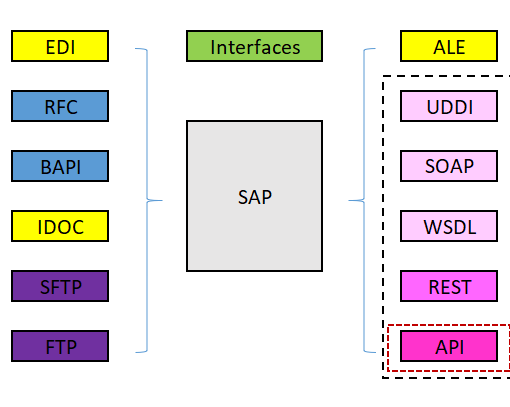SAP PP Module (Production Planning) is a module within SAP’s ERP (Enterprise Resource Planning) system. It helps organizations plan and manage their production processes more efficiently, providing them with the tools they need to optimize the production process and reduce waste. This module is particularly useful for companies in the manufacturing industry, but it can also be used by other organizations that need to manage production processes.
What is PP DS in SAP?
PPDS in SAP refers to Production Planning and Detailed Scheduling. It is a module in SAP’s Advanced Planning and Optimization (APO) system that provides advanced production planning and scheduling capabilities. The PPDS tool helps to optimize production and resources, balance supply and demand, and improve delivery times, among other benefits. It integrates with other SAP modules such as Material Requirements Planning (MRP) and Sales and Operations Planning (S&OP).
The main purpose of SAP PP Module is to help organizations to:
- Plan their production processes effectively and efficiently.
- Monitor production processes in real-time.
- Evaluate production performance and make necessary improvements.
- Optimize resource utilization.
- Improve the overall quality of the production process.
- Key components of SAP PP:
Master Data SAP PP Module :
This includes all the data required to run the production process, such as the bill of materials (BOM), routing, work centers, and production versions. It also includes the data related to production orders, including the planned start and end dates, the material requirements, and the planned costs.
Production Planning:
This component allows you to plan production processes, including the creation of production orders, defining the planned start and end dates, and determining the material requirements. It also includes capacity planning, which helps you to determine the availability of resources, such as manpower and machinery, and schedule production processes accordingly.
Material Requirements Planning (MRP):
This component helps you to plan the material requirements for production processes. It takes into account the availability of materials, the lead times for procurement, and the production processes to determine the optimal material requirements.
Capacity Planning:
This component helps you to determine the availability of resources, such as manpower and machinery, and schedule production processes accordingly. It also helps you to evaluate the performance of production processes, identify bottlenecks, and make necessary improvements.
Production Order Management:
This component helps you to manage production orders, including the creation, execution, and monitoring of production orders. It also helps you to track the progress of production processes and make necessary adjustments.
Production Costing:
This component helps you to calculate the costs of production processes, including the costs of raw materials, labor, and overhead. It provides you with the information you need to make informed decisions about the production process and helps you to identify areas where you can reduce costs.
Quality Management:
This component helps you to manage the quality of the production process, including the inspection and testing of materials, products, and production processes. It also helps you to monitor the quality of production processes in real-time and make necessary improvements.
Benefits of using SAP PP Module:
Improved Planning and Scheduling:
SAP PP provides organizations with the tools they need to plan and schedule production processes more effectively and efficiently. This helps to reduce waste and optimize resource utilization, improving the overall quality of the production process.
Real-time Monitoring:
SAP PP allows organizations to monitor production processes in real-time, providing them with the information they need to make informed decisions about the production process. This helps to identify bottlenecks, evaluate performance, and make necessary improvements.
Improved Resource Utilization:
SAP PP helps organizations to optimize the utilization of resources, including manpower and machinery. This helps to reduce waste, improve the quality of the production process, and increase overall efficiency.
Better Quality Control:
SAP PP provides organizations with the tools they need to manage the quality of the production process, including the inspection and testing
A Career in SAP PP requires the following basic skills:
Degree from a perceived foundation/college and a decent instructive foundation.
Fundamental information on data and PC applications.
Earlier information and hands-on experience (discretionary however advantageous) of the creation arranging and ERP instruments
Preparing in this SAP Module is the most ideal for project colleagues, business experts, IT staff, stock administrators, administrative staff in the division of creation and buying, specialists, coaches, etc. Subsequent to getting a confirmation in this course, they can play out their errands with the assistance of SAP PP Module devices and programming applications – in a precise and proficient way.
Key Features of SAP PP:
Master Data Management: SAP PP enables organizations to create and manage master data related to manufacturing, such as bills of materials (BOM), work centers, routings, and production versions. Centralized and accurate master data ensures consistency, eliminates redundancies, and facilitates efficient production planning and control.
Demand Management: SAP PP allows businesses to forecast demand, create production plans, and generate planned orders based on customer orders, sales forecasts, or historical data. Demand management functionalities help organizations optimize inventory levels, reduce stockouts, and align production with customer requirements.
Production Planning: The production planning capabilities of SAP PP empower organizations to create detailed production schedules, considering factors such as resource availability, lead times, and capacity constraints. The module supports various planning strategies, including make-to-stock, make-to-order, and repetitive manufacturing, ensuring efficient allocation of resources and optimized production sequences.
Shop Floor Control: SAP PP provides tools for real-time shop floor monitoring and control. It allows for the creation and release of production orders, tracking of work progress, capturing of actual production data, and reporting of production variances. Real-time visibility into the production process enables businesses to identify bottlenecks, address issues promptly, and ensure smooth operations.
Material Requirements Planning (MRP): The MRP functionality in SAP PP automates the planning and procurement of raw materials based on production requirements. It considers factors such as lead times, safety stock, and reorder points to generate procurement proposals and optimize material availability. This helps organizations avoid stockouts, reduce excess inventory, and streamline the procurement process.
Conclusion:
Efficient production planning and control are critical for organizations seeking to thrive in the competitive manufacturing industry. The SAP PP module offers a comprehensive suite of features that enable businesses to optimize their production processes, enhance efficiency, and achieve operational excellence. From demand management and production planning to shop floor control and material requirements planning, SAP PP provides the tools needed to streamline manufacturing operations, improve product quality, and reduce costs. With real-time reporting and analytics, organizations gain valuable insights to drive data-driven decision-making and continuous improvement. Implementing the SAP PP module empowers businesses to meet customer demands, increase productivity, and gain a competitive edge in the ever-evolving manufacturing landscape.





